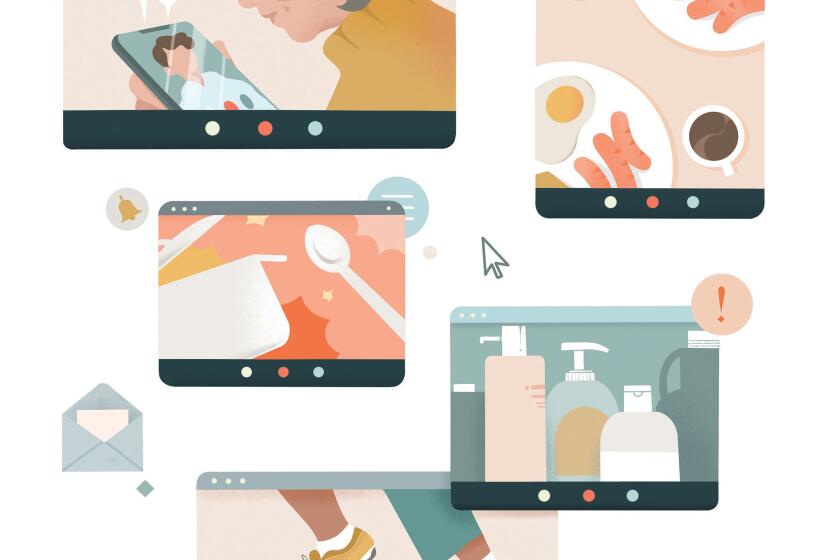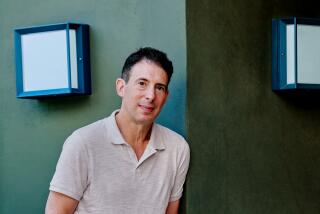Op-Ed: Seven ways the AIDS epidemic prepared me for COVID-19
- Share via
This thing is not over. COVID-19 hospitalizations, deaths and surges will continue. It will be months to years before a vaccine or herd immunity makes us free to jostle in line at a restaurant or sit shoulder-to-shoulder at a funeral, concert hall, bar, synagogue, sports arena or AA meeting.
Given we’re in for the long haul, I found myself remembering how gay people responded to the AIDS crisis of the 1980s and 1990s. I was a reporter in San Francisco then, and lessons I learned apply today.
Acknowledge surreal, disconnected grief. The San Francisco Chronicle’s lead AIDS reporter, Randy Shilts, who died of AIDS complications in 1994, told me that during the height of the epidemic, he dwelled in parallel universes, like a combat vet. His gay brothers were dying left and right, while his straight colleagues at the newspaper lived eerily ordinary lives.
Specifics are different now, but a similarly surreal atmosphere obtains. The healthy chafe at confinement. But the ever-present reality of death and our helplessness before it are as obvious as the refrigerator trucks parked outside hospitals. Few of us will be untouched, and in the meantime, we will suffer moral distress, anxiety and anticipatory grief.
Accept that life has changed. The AIDS virus was primarily transmitted sexually — devastating news for gay men in cities like San Francisco, living, for the first time, without threat of attack because of their sexuality. Public health officials walked a delicate line, trying to persuade everyone to adopt safe sex practices without denigrating gay desire. A vicious, protracted debate ensued over San Francisco’s gay bathhouses, where people engaged with multiple partners in a single night. Shutting them down was anti-gay bigotry, some argued; others said that whoever kept them open had blood on their hands. When the city shuttered them, an era ended.
A similar intense debate is now occurring over the balance between absolutist prohibitions and harm reduction. When and within what limits will the state allow the reopening of churches, bars, parks and other gathering places? Will work that permits physical distancing be allowed, even if it’s not obviously “essential”? Will it be years before fans crowd into sports arenas again by the thousands?
Wherever science and politicians draw the lines, we will be reckoning with a refigured economy, increased death rates and loss of broader human connections for quite some time.
In our “Dispatches From the Pandemic” series, we bring you personal stories from people whose lives have been altered by COVID-19.
Help your neighbor. The government was disorganized and slow to step up in the 1980s, as it is now. Young men died alone, suffering from not only disease but stigma. Into the breach sprang new grass-roots advocacy and care organizations such as the Gay Men’s Health Project in New York and San Francisco’s Shanti Project and Coming Home Hospice, the latter founded by elderly widows and gay parishioners (the “gays and grays”) of Most Holy Redeemer Church.
No stigma attaches to the coronavirus. But people are dying alone in hospital rooms, and stay-at-home orders can by emotionally devastating for single people. New organizations are emerging, such as Heart of Hospice’s temporary “pop up” inpatient COVID-19 hospice in New Orleans, which allows family visits. Meanwhile, helping others one by one reduces anxiety in both directions. Join a mask-sewing group, hook up with a phone “health buddy,” drop off groceries or take a physically distanced walk with an older neighbor on a walker.
Find comfort in art, religion and ritual. Publicly acknowledging that our lives have changed normalizes grief. Our losses cannot be fixed, but it is easier to bear them in community. The AIDS Memorial Quilt, started by San Francisco activist Cleve Jones, is one of the most massive and beautiful public art projects ever created. Home-sewn panel by panel, it memorializes more than 100,000 lives, and continues to transmute private pain into a memorable national expression of loss and love.
Today we see bodies zipped into body bags, even buried in mass graves. We have to find ways to mourn and honor them. Last month, I took part in a Zoom-based online ritual inspired by the Jewish yahrzeit, or memorial, candle. On April 9, more than 300 people held lighted candles up to their screens while names of the dead, the ill and the at-risk scrolled by in a chat box. The ceremony, organized by Reimagine, a Berkeley-based death awareness group, will be repeated on the 9th of every month, commemorating the first COVID-19 death, in China, believed to have occurred on Dec. 9, 2019.
Expect political action. In the 1980s, gay demonstrators from ACT UP besieged government agencies, eventually leading to more rapid deployment of AIDS treatments. Will the coronavirus pandemic strengthen public demands for universal healthcare, better pay for nursing home workers, a stronger safety net and a vaccine given away (like the polio vaccine) as a public service rather than providing a bonanza for pharmaceutical companies? We shall see.
Look for silver linings. Simplistic platitudes like “Everything happens for a reason” won’t cut it. I’m suggesting cultivating gratitude in order to get up and face another day.
The horror and devastation of the AIDS crisis helped gay men see themselves, and be seen, as more than sexual beings. Estranged parents often chose love over abstract bigotry, bringing their dying children home. Jones believes the AIDS crisis set the stage for the legalization of gay marriage.
Our current stay-at-home retreat could lead to a rethinking of elective and ecologically damaging air travel. We have been given a chance to confront our manufactured busyness. We are discovering that individual human actions, practiced voluntarily on a mass scale out of concern for people we don’t know, can slow climate change and redesign our cities without government action.
Practice radical acceptance. The AIDS crisis created street saints. Issan Dorsey, a former female impersonator, methamphetamine user and drug dealer who got clean and became a Zen priest years before the AIDS crisis, turned a house in San Francisco’s Castro district into the Maitri hospice, which still exists today.
“Half the people in this community are going to die in the next five years,” he told me matter-of-factly in 1988 while he patched a Zen robe. “It’s just our daily life. It’s happening.
“I know people who are taking courses in ‘The Tibetan Book of the Dead,’ but I think it’s too late for a crash course on dying,” said Dorsey, who would himself be gone in just a few years. “This is your preparation for dying: just to live your life more completely in each moment. The way I get ready for my death is by sewing these robes and talking to you.”
Katy Butler is a former San Francisco Chronicle staff reporter and the author of “Knocking on Heaven’s Door” and “The Art of Dying Well,” recently released in paperback.
More to Read
A cure for the common opinion
Get thought-provoking perspectives with our weekly newsletter.
You may occasionally receive promotional content from the Los Angeles Times.











